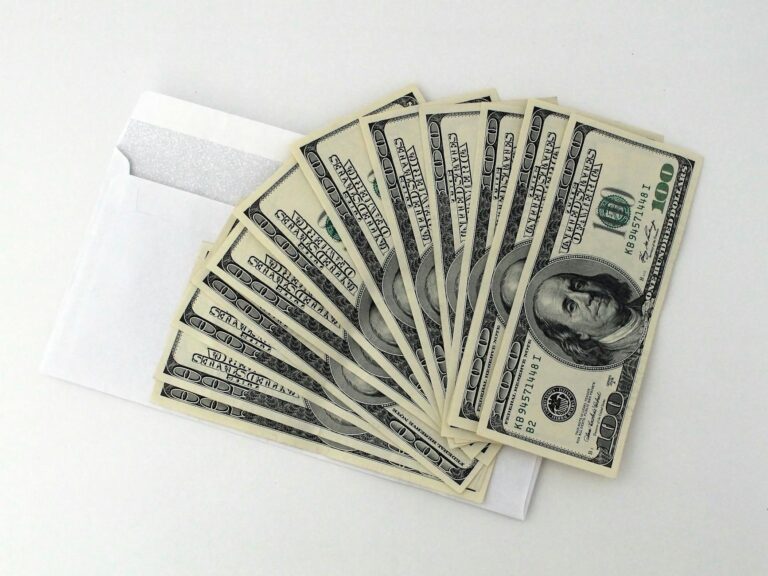Thriving Without Debt: Actionable Debt-Free Living Tips
Strategies for Debt-Free Living
Want to break free from debt and finally have a say in your financial future? Here’s how: Keep spending in check and learn the magic of budget-making. Let’s dive into these two lifelines for your wallet.
Limiting Spending
Kicking the spending habit is like trying not to eat the cookies you just baked. Society turns up the heat by dangling shiny things in front of us, making debt seem almost natural. But don’t sweat it. Here’s how to dodge that bullet and still enjoy life a little:
- Needs vs Wants: Seriously figure out what you can’t live without versus what you just think you need. It’s priority time.
- Spending Limits: Give yourself a monthly cap on fun stuff, and actually stick to it. Your future self will thank you, trust me.
Studies say keeping an eye on spending habits makes it way easier to stay on the straight and narrow (Central Bank).
Creating a Budget
Turning your money into a well-oiled machine? That’s where the magic of a budget comes in. It’s like your personal finance coach, nudging you to track where your cash heads off to every month.
| Budget Components | Monthly Amount |
|---|---|
| Income | $3,000 |
| Essential Expenses | $1,800 |
| Non-Essential Expenses | $600 |
| Savings | $300 |
| Debt Repayment | $300 |
Making a budget is like playing financial detective, keeping tabs on your money and tweaking as you go to nail those financial targets. You might find ways to slice your utility bills or say goodbye to those extra lattes, all to put more cash towards what matters—shrinking that debt (Prosper).
Budgeting is your map to financial freedom, guiding you out of debt-town. Want more insights? Peek at the budget management techniques and debt reduction strategies for more handy tips.
Tracking Finances
Keeping tabs on your money is a must for stepping out of the debt trap. It’s about watching where your dollars are dancing off to and figuring out how to make more of ’em. This bit of detective work helps folks understand their spending habits and tweak ’em as needed.
Monitoring Transactions
Keeping an eye on your transactions helps your wallet stay in shape. Spotting everyday spending lets you pinpoint those little leaks that might be sinking your budget. Knowing where your cash is disappearing can help nip unnecessary expenses in the bud – pushing you toward living without debt. Here’s how you can get a grip on your spending:
| Tip | Description |
|---|---|
| Use Financial Apps | Get some budgeting apps to keep tabs on your spending and group things into categories automatically. |
| Regularly Review Bank Statements | Peek at your bank statements every month to catch funky charges and really see how you’re spending. |
| Create a Spending Log | Jot down what you blow cash on daily. Seeing it laid out can show where you’re going overboard. |
Being consistent with your financial sleuthing can help you stick to your budget, which is a big deal for growing savings. For more tricks on budgeting, check out our article on living on a budget.
Increasing Income
Boosting your income is a strong move toward ditching debt. A few ways to beef up your earnings can put extra dollars in your pocket for saving or paying down what you owe:
| Method | Description |
|---|---|
| Side Hustles | Dive into freelancing or part-time gigs that match your hobbies or skills. |
| Skill Development | Consider brushing up your education or skills to snag better-paying jobs. |
| Selling Unused Items | Clear out the clutter and make some quick cash by selling stuff collecting dust. |
According to Prosper, bumping up your income can seriously help your budget, making it easier to spend less than you make. Regular income increases mean you can save more—a common trait among folks who are debt-free, as noted by How to Money.
To keep the financial boat steady, it’s important to track both outgoing and incoming money. By staying on top of your money’s movements, you’re laying the groundwork for a debt-free tomorrow. For more tips on handling finances like a pro, check out our budget management techniques and debt reduction strategies.
Importance of Savings
Hitting that sweet spot with savings can set you on the path to living without debt shackles. By stashing away a little cash regularly, folks can feel more cushy and cut down on that urge to swipe the plastic. Let’s dig into the two major players in the saving scene: socking away for rainy days and using those pesky credit cards like a pro.
Building an Emergency Fund
Think of an emergency fund as your financial cozy blanket to handle life’s curveballs—like your car suddenly deciding it won’t start or those darn unexpected doctor visits. People rockin’ a debt-free life put their emergency fund right up on the priority list to dodge tumbling into debt when things go south. Most money gurus give a thumbs-up to kicking off with a savings pot of around $2,467, which should have your back for most surprise-money-suckers (How to Money).
| Emergency Fund Goals | Amount |
|---|---|
| Initial Savings Target | $2,467 |
| Recommended Monthly Savings | $200/month |
| Target Savings Timeline | 12 months |
Getting that emergency stash going means getting into the habit of squirreling money away, like setting up automatic deposits from your checking to your savings account (Prosper). This keeps you on track with your savings goals and makes sure you’ve got a pile ready when life goes off-script.
Wise Credit Card Usage
Credit cards are handy little tools, but they can sneak up on you if you’re not careful. Debt-free champions toy with credit cards carefully, making sure they help, not hinder. Here’s how to stay on the smart side:
- Pay balances in full: Always shoot to settle the entire credit card bill monthly to sidestep those annoying interest fees.
- Limit usage to essential purchases: Use credit cards only for what you truly need, so you can zero out your balance when the bill shows up.
- Watch for fees: Keep a lookout for sneaky credit card fees, like those for late payments or spending over your limit.
Wrap smart credit card habits into your money playbook along with a rock-solid budget to keep your finances in check over the long haul. If you’re hunting for nuggets of wisdom on keeping your budget tight, check our guide on budget management techniques.
By stacking up your emergency fund and mastering credit card moves, you’re on your way to a more stable financial footing, aiming for that debt-free vibe. For more tips on kicking debt to the curb, peek at our write-up on debt reduction strategies.
Challenges of Debt
Dealing with debt can feel like dragging a ball and chain through life’s race. With prices climbing and credit becoming a crutch, many folks find themselves stuck in the quicksand of debt. Getting out is no easy feat, but it’s crucial for anyone dreaming of that sweet sound of financial freedom.
Average Debt Statistics
Let’s talk numbers, and spoiler alert, they’re not pretty. Research shows a shocking 60% of Americans carry a credit card tab, with each person owing around $5,875 on average. Plus, 23% admit they’re sinking further every month (How to Money).
Here’s how it breaks down across different debts:
| Type of Debt | Percent of Folks Struggling |
|---|---|
| Credit Card | 60% |
| Student Loans | 44% |
| Car Loans | 35% |
| Personal Loans | 25% |
These numbers scream urgency, underlining why a solid debt reduction plan is a must.
Mindful Spending
Mindful spending’s like your GPS when navigating through financial fog. It means thinking seriously about what you buy and making sure it’s got a purpose that clicks with your values. This can save you bucks and help you stack up your savings. Experts say debt-free folks keep a close watch on their pennies, spotting patterns they can tweak (How to Money).
Here’s the game plan:
- Does this buy bring me closer to my goals?
- Is this worth giving up something else?
- Will this make my life better, really?
Making these questions part of your routine helps keep your wallet and sanity in check. Living smart means living within your budget, a cornerstone for hitting financial dreams. Layer this mindset with smart budget management hacks.
By staring down the ugly truths about debt and letting mindful spending guide your wallet, you set the stage for a smoother financial journey. Middle-class families looking to boost their cash flow can seriously benefit from these strategies. Dive into more financial freedom tips to light up your path to a stress-free bank account.
Effective Debt Repayment
Gettin’ a handle on debt, it’s like grabbing the reins on a runaway horse. You wanna stay upright and steer toward a stable financial future. That’s what we’re chatting about here—figuring out your debt like a pro by knowing what you owe and planning to pay it off.
Knowing Your Debt
Before you can start chipping away at that mountain, you gotta know what you’re dealing with. That means lining up all the nasty details: how much you owe, how steep the interest, and what the monthly pay-ups look like. Round up this intel, and you’ll be set to make a game plan for paying it all down.
| Debt Type | Amount Owed | Interest Rate (%) | Minimum Payment |
|---|---|---|---|
| Credit Card 1 | $1,500 | 18 | $50 |
| Credit Card 2 | $2,800 | 15 | $70 |
| Personal Loan | $3,000 | 7 | $100 |
| Student Loan | $5,000 | 5 | $150 |
Getting these digits straight is key. It lets you zero in on what needs tackling first.
Debt Repayment Strategies
There’s more than one way to skin a cat, as they say, and paying off debt ain’t no different. Pick your strategy:
-
Debt Snowball Method: It’s like tackling your to-do list—start with the easiest thing first to build confidence. You knock out the smallest debt, then roll what you were paying there into the next one.
-
Debt Avalanche Method: This ain’t about thrill-seeking. Here, you target the debt that’s cramped with the biggest interest first, so you end up saving more dosh in the long haul.
Tackling more than just the minimum monthly payment can give you a real boost. Toss an extra hundred bucks or so each month, and watch those loan terms shrink.
| Payment Scenario | Minimum Payment | Extra Payment | New Total Payment | Estimated Time to Pay Off |
|---|---|---|---|---|
| Scenario A | $50 | $0 | $50 | 36 months |
| Scenario B | $50 | $100 | $150 | 10 months |
Balling all your loans and crumpled credit cards into one neat, low-interest loan also might save you a few headaches. This tip-top trick doesn’t just make payments less of a puzzle—it’ll also level out the stress of juggling multiple debts.
By knowin’ what’s up with your debt and playin’ your strongest hand at paying it back, you’ll be striding forward toward financial freedom. And hey, if you’re keen on more wisdom for handling finances, scope out our pieces on debt reduction strategies and financial freedom tips.
Negotiating Lower Interest Rates
Trying to ditch debt? One nifty trick up your sleeve is haggling for lower interest rates on loans and credit cards. With the right moves, you can save some dough and give your finances a serious boost.
Benefits of Lower Interest
Scoring a better interest rate on your debt means one thing – you get to keep more of your hard-earned cash. Lower interest rates mean fewer dollars going into the lender’s pocket, allowing more to chip away at what you owe. This way, you’re not just lifting some weight from your shoulders but also upping your credit game with better scores thanks to timely payments and less debt hanging around.
Ever noticed how reducing that rate can stretch your budget further? Check out this table!
| Current Rate (%) | New Rate (%) | Monthly Payment Savings | Total Savings Over Loan Term |
|---|---|---|---|
| 18% | 12% | $50 | $1,800 |
| 15% | 10% | $40 | $1,200 |
| 20% | 15% | $30 | $900 |
Lowering interest helps fill up your pockets with savings rather than lining the bank’s, not to mention the brownie points for your credit score when debts are more under control. For more penny-pinching magic, swing by our living on a budget tidbits.
Negotiation Tactics
Here’s a rundown to getting those interest rates down:
-
Check Yourself (Before You Wreck Yourself): Peek at your credit history and payment vibes before dialing your issuer. This info is your trump card.
-
Timing is Everything: Call when you’re in your issuer’s good books. Remind them how you’ve been a loyal, bill-paying rockstar.
-
Lay it on the Line: If cash flow’s tight (like due to job loss), spill your story. Sometimes, empathy buys you a better rate.
-
Speak Up for What You Want: Be clear about a specific rate or even ask for a pause on payments if you’re in a squeeze. Exact numbers stand out more than just asking for ‘a bit less.’
-
Spread the Love: Don’t just whisper sweet nothings to one issuer. Talk to all your credit card companies – every little bit helps. Dive into debt reduction strategies for more ways to stretch those dollars.
These savvy strategies don’t just put you in the driver’s seat for negotiating but also make debt paying-off smoother. Putting in the legwork to lower interest rates now can hit the brakes on financial stress, inching you closer to cutting those apron strings with debt. For more tips on living your best financial life, peek at our financial freedom tips.







